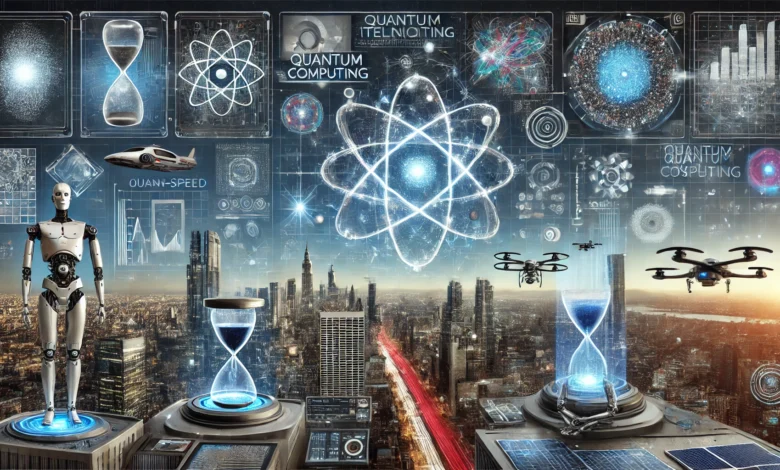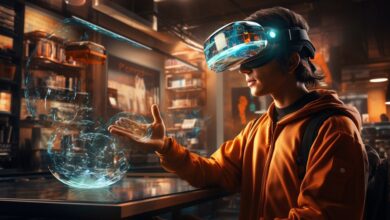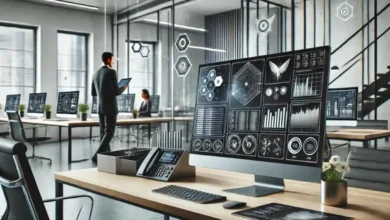WAAA 117 Technology and Near-Future Advancements: A Detailed Overview

The world is experiencing rapid technological growth, transforming industries, economies, and lifestyles. Among the various cutting-edge technologies shaping the future, WAAA 117 technology stands out as a prominent player. While it may not be a household name just yet, WAAA 117 promises a paradigm shift in numerous fields. This article will delve into the essence of WAAA 117 technology, its potential applications, the advancements it could bring, and the implications for our near future.
What is WAAA 117 Technology?
WAAA 117 is a term that refers to a set of emerging technologies characterized by advanced artificial intelligence (AI), high-speed data processing, and autonomous systems. Unlike traditional technologies, WAAA-117 focuses on integrating multiple disciplines like machine learning, quantum computing, and nanotechnology to solve complex problems in real-time.
The essence of WAAA 117 lies in its capacity for seamless interaction between machines and the environment, leveraging AI to autonomously make decisions, perform complex computations, and carry out tasks with minimal human intervention. Think of WAAA-117 as a fusion of the latest technological innovations designed to operate harmoniously, providing solutions that are faster, more efficient, and scalable.
Core Components of WAAA 117 Technology
- Artificial Intelligence (AI) and Machine Learning (ML): At the heart of WAAA-117 is AI, which allows systems to mimic human intelligence, learn from data, and adapt over time. ML, a subset of AI, enables machines to learn patterns and improve their performance without explicit programming. WAAA 117 incorporates advanced AI models that are capable of deep learning, natural language processing, and even decision-making.
- Quantum Computing: Quantum computing is another pillar of WAAA 117. By harnessing the principles of quantum mechanics, quantum computers can process a vast amount of information simultaneously, making them exponentially more powerful than classical computers. This capability is crucial for tackling problems in encryption, logistics, and large-scale simulations that traditional computing can’t handle efficiently.
- Autonomous Systems: WAAA-117 technology employs autonomous systems that operate independently, making decisions based on real-time data. This includes self-driving cars, drones, robotic process automation (RPA) in factories, and intelligent logistics systems. The integration of autonomous systems into various industries is expected to revolutionize the way we approach complex tasks.
- High-Speed Data Processing and Connectivity: The speed at which data can be processed and transmitted is a game-changer. WAAA-117 utilizes ultra-fast data processing technologies, including edge computing, 5G, and fiber-optic communications, to ensure that data flows smoothly and decisions are made instantaneously.
- Nanotechnology: Miniaturization is a key aspect of WAAA 117. Nanotechnology enables the development of smaller, more efficient devices that can perform intricate functions. From nanobots used in medical procedures to nanoscale sensors monitoring environmental conditions, the potential applications are extensive.
How WAAA 117 Will Shape Various Industries
WAAA-117 technology is set to bring transformational changes across a range of industries. Here’s a closer look at how it could impact key sectors:
1. Healthcare
WAAA 117’s impact on healthcare is perhaps one of the most promising. Through AI-driven diagnostics, personalized medicine, and autonomous surgical robots, healthcare could see significant advancements in the near future.
- AI Diagnostics: With WAAA 117, AI-powered diagnostic tools can process and analyze medical images, identifying patterns and anomalies that may be missed by the human eye. This leads to earlier detection of diseases, such as cancer, and more effective treatment plans.
- Personalized Medicine: Leveraging quantum computing and AI, WAAA 117 can analyze a patient’s genetic makeup to tailor personalized treatment plans. This level of customization could revolutionize how diseases are treated, improving patient outcomes and reducing side effects.
- Autonomous Surgery: Robotic systems equipped with WAAA-117 technology can perform delicate surgical procedures with precision. These robots operate with real-time feedback and AI algorithms, minimizing human error and enhancing patient safety.
- Telemedicine and Remote Monitoring: With high-speed data processing and connectivity, WAAA 117 enables telemedicine platforms to provide real-time consultations. Wearable devices powered by nanotechnology and AI can monitor patients’ vitals, detect abnormalities, and alert healthcare professionals instantly.
2. Transportation and Mobility
Autonomous vehicles, enhanced by WAAA-117 technology, are set to redefine the future of transportation. AI-driven algorithms, real-time data processing, and sensor fusion make self-driving cars safer and more efficient.
- Self-Driving Vehicles: WAAA 117’s integration with autonomous vehicles means cars can navigate complex environments, predict hazards, and communicate with other vehicles and infrastructure. This could drastically reduce road accidents and alleviate traffic congestion.
- Drones and Delivery Systems: In logistics, drones powered by WAAA-117 technology can handle last-mile deliveries autonomously, reducing delivery times and costs. These drones use real-time mapping, obstacle avoidance, and AI-based decision-making to optimize their routes.
- Smart Infrastructure: With the help of WAAA 117, cities can develop intelligent transportation systems that monitor traffic conditions, manage public transportation, and even guide emergency response vehicles efficiently.
3. Manufacturing and Industry 4.0
The manufacturing sector is on the brink of a revolution with the advent of Industry 4.0, characterized by smart factories and advanced automation. WAAA 117 technology is central to this transformation.
- Smart Factories: Autonomous robots equipped with WAAA-117 technology can handle complex assembly processes, quality inspections, and inventory management. These robots communicate with each other, share data, and adjust operations based on real-time analytics.
- Predictive Maintenance: WAAA 117-powered sensors and AI algorithms predict equipment failures before they occur, reducing downtime and maintenance costs. By analyzing machine performance data, factories can optimize production schedules and prevent costly breakdowns.
- Supply Chain Optimization: Using quantum computing and AI, WAAA-117 technology can model and optimize entire supply chains, accounting for variables like demand fluctuations, raw material availability, and shipping delays. This leads to cost savings, reduced waste, and improved delivery times.
4. Finance and Banking
The finance sector is already embracing AI, but WAAA 117 could take it to a whole new level. Quantum computing, in particular, has the potential to revolutionize financial modeling, risk assessment, and cybersecurity.
- Risk Management: WAAA 117 allows financial institutions to process vast amounts of market data in real-time. By using quantum algorithms, banks can model complex risk scenarios and make informed decisions faster than ever.
- Fraud Detection: AI-powered WAAA 117 systems can detect fraudulent transactions by analyzing spending patterns and identifying anomalies. These systems learn and adapt over time, staying ahead of increasingly sophisticated cyber threats.
- Automated Trading: In trading, WAAA 117’s high-speed data processing and AI capabilities enable the development of algorithms that react to market changes within milliseconds, optimizing trades and maximizing returns.
5. Environmental and Energy Management
WAAA 117 technology could play a significant role in addressing environmental challenges and managing energy resources more efficiently.
- Smart Grids: WAAA 117 can help create smart energy grids that optimize electricity distribution, predict consumption patterns, and balance the load between renewable and non-renewable energy sources.
- Climate Monitoring: Advanced sensors using nanotechnology and AI can monitor environmental conditions in real-time, providing crucial data for climate modeling and disaster prediction. This data can then be processed by quantum computers to generate more accurate forecasts and solutions.
- Autonomous Farming: In agriculture, WAAA 117 can power autonomous farming equipment, such as self-driving tractors and AI-driven irrigation systems, optimizing resource use and increasing crop yields.
The Near-Future Implications of WAAA 117 Technology
The potential impact of WAAA 117 technology on society is both promising and complex. While its integration into various industries could bring significant benefits, it also raises critical questions regarding ethics, security, and economic disparity.
1. Job Market Transformation
Automation and AI-driven systems may lead to a reshaping of the job market. While WAAA 117 technology could create new jobs in fields like AI development, data analysis, and robotics maintenance, it also poses a risk of displacing traditional roles in manufacturing, transportation, and services. Adapting to this shift will require upskilling the workforce and investing in education to meet the demands of a technologically advanced economy.
2. Privacy and Security Concerns
With WAAA 117’s reliance on data processing, concerns about data privacy and security come to the forefront. AI systems require vast amounts of personal and sensitive data to operate effectively, raising questions about how this data is stored, used, and protected. Additionally, the implementation of quantum computing could render current encryption methods obsolete, necessitating new approaches to cybersecurity.
3. Ethical Considerations in AI
The autonomous decision-making capabilities of WAAA 117 raise ethical concerns, particularly in healthcare and transportation. For example, in self-driving cars, AI must make split-second decisions that could have life-or-death consequences. Similarly, AI-driven healthcare systems must navigate the complexities of patient care while respecting privacy and consent.
4. Environmental Impact
While WAAA 117 technology could facilitate environmental management, the production and operation of advanced systems like quantum computers and nanotechnology devices have their environmental footprints. Balancing technological advancement with sustainability will be crucial to ensure a positive future impact.
Conclusion
WAAA 117 technology encapsulates a blend of AI, quantum computing, autonomous systems, high-speed data processing, and nanotechnology, poised to revolutionize multiple industries. From transforming healthcare to optimizing supply chains, its potential applications are vast and far-reaching. However, the integration of WAAA 117 into society also introduces challenges related to job displacement, data security, ethical decision-making, and environmental sustainability.
As we move into this new era, it will be essential for stakeholders – governments, businesses, and individuals – to work collaboratively to address these challenges. By fostering an environment of innovation, ethical use, and education, society can harness the power of WAAA 117 technology to drive progress while mitigating its risks. The advancements on the horizon may not only redefine how we interact with technology but also reshape the fabric of our daily lives. In essence, the future shaped by WAAA 117 is one where intelligence, efficiency, and autonomy converge to create a more connected, responsive, and dynamic world.
Also Read: Ancient Art: A Glimpse into Humanity’s Earliest Expressions





